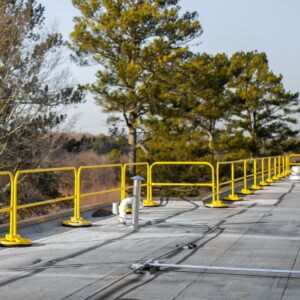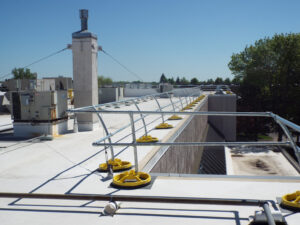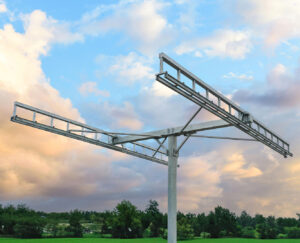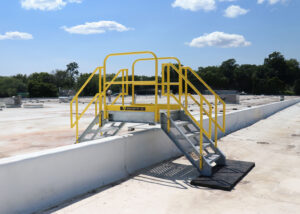Crossover Ladder: Bridging the Gap to Workplace Safety and Efficiency
Products Used
Introduction
If you spend any amount of time on rooftops, you’ll encounter all kinds of obstacles. Commercial rooftops are home to all manner of supply lines, pipes, equipment, power cables, parapets and changes in elevation. Often, the only way to ensure the safe and efficient navigation of commercial rooftop spaces is the installation of crossover stairs and ladders.
What are Crossover Ladders?
By definition, crossover products are specialized ladders and stairs designed to provide safe passage over obstacles, barriers or gaps in the workplace. They serve as a designated pathway that allows workers to safely navigate across elevated surfaces and over machinery, equipment or other obstructions with ease. More importantly, they help to greatly reduce the risk of slips, trips, falls and other accidents. By providing a designated route for workers, a crossover platform streamlines workflows, enables efficient movement and mitigates risk.
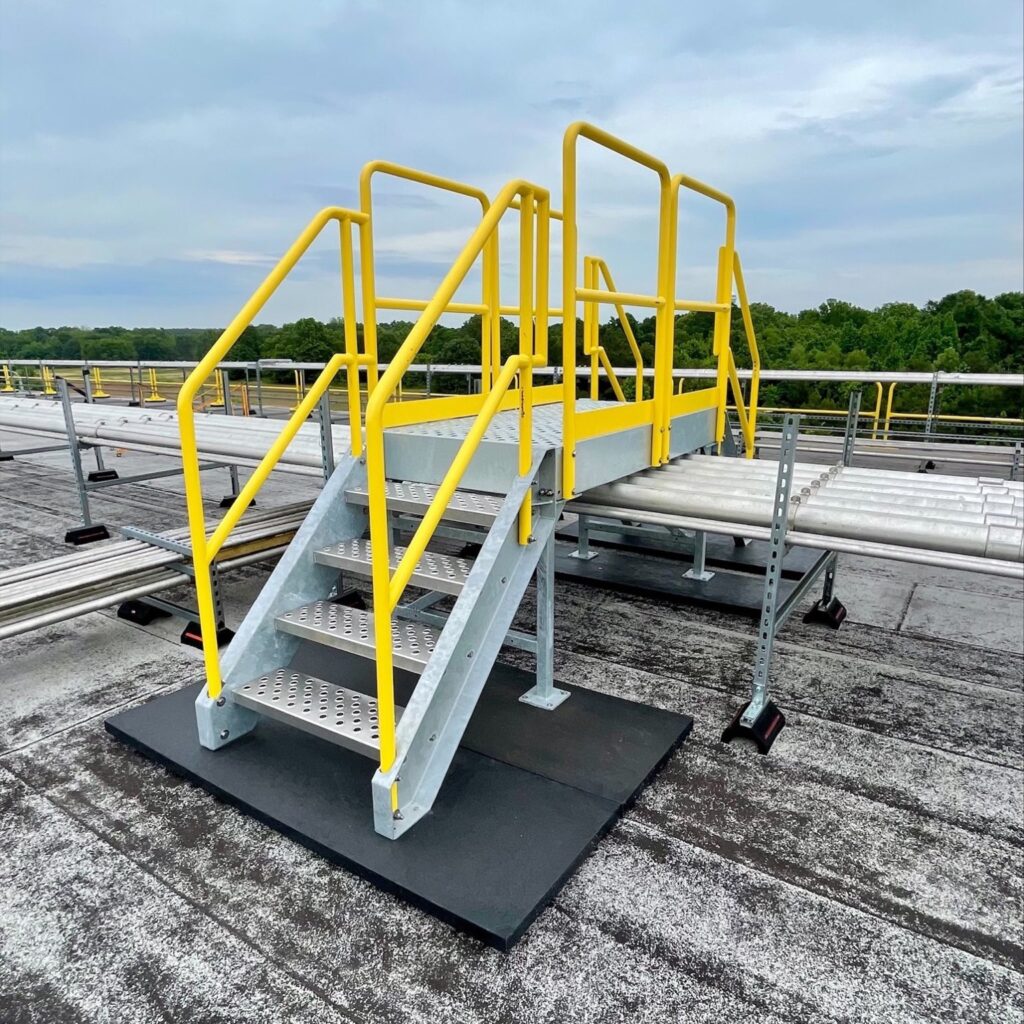
It’s important to note that there are clear differences between traditional ladders and stairs and their OSHA-compliant counterparts. When OSHA compliance calls for a crossover product, look for the following:
Compliance with Standards:
It seems obvious, but make sure the products you choose meet the required criteria such as OSHA (Occupational Safety and Health Administration), ANSI (American National Standards Institute), and IBC (International Building Code) requirements. Compliance ensures the ladder is designed and manufactured to meet specific safety guidelines and may help to protect your organization from liability.
Sturdy Construction:
Look for high-quality materials such as aluminum or galvanized steel. Aluminum is generally more expensive but a lighter material. If you opt for steel, demand hot-dip galvanized and powder-coated. These protective coatings offer long-term protection against environmental factors and will last longer.
Non-Slip Surfaces:
Ladders should have a non-slip surface on the steps and platform to provide secure footing for users, even in wet, icy or oily conditions.
Handrails:
The presence of handrails is essential for user safety. A crossover ladder should have sturdy handrails on both sides, which offer support and stability to users as they climb up and down.
Safety Gates:
Many crossover stairs feature safety gates that automatically close when the ladder is not in use. These gates prevent unauthorized access and reduce the risk of accidents.
Adjustable Heights:
Some crossover stairs come with adjustable height options, allowing them to be used in various settings. This feature allows the ladder to accommodate different platform heights or obstacles.
Anti-Tip and Stability Features:
To ensure stability, a reliable crossover platform often has anti-tip features such as wide base supports or adjustable leveling feet.
Easy Installation and Portability:
Crossovers should be easy to install and relocate as needed. Some crossover ladders are designed to be portable, allowing them to be moved to different locations within a facility as manufacturing and/or conveyor belt configurations change.
Load Capacity:
The ladder should have a specified load capacity that is appropriate for the intended use. This ensures the ladder can support the weight of users and the equipment or materials they may carry.
Applications
Manufacturing and Industrial Facilities: Crossover platforms are often used in manufacturing plants, warehouses and industrial settings where workers need to cross over conveyors, equipment or piping systems.
Construction Sites: Construction sites often have temporary or permanent obstacles like conduits, pipelines, trenches or large equipment to be safely navigated.
Power and Energy Sector: Crossover stairs are essential in power plants, substations and energy facilities, where workers need to access elevated platforms, electrical panels or equipment.
Oil and Gas Industry: In refineries, drilling rigs and offshore platforms, crossover ladders are utilized to provide safe passage over piping, equipment or walkways.
Transportation and Logistics: Crossover platforms are used in transportation and logistics facilities, such as airports, train yards and distribution centers.
Food Processing and Pharmaceutical Plants: Industries with stringent hygiene requirements, such as food processing or pharmaceutical plants, utilize crossover stairs to enable safe access to elevated areas while minimizing the risk of contamination.
As with any risk-reducing investment, communication, training and adoption are critical. Properly training employees on the correct use of crossover stairs and ladders is crucial to ensure safe working environments and job sites.

